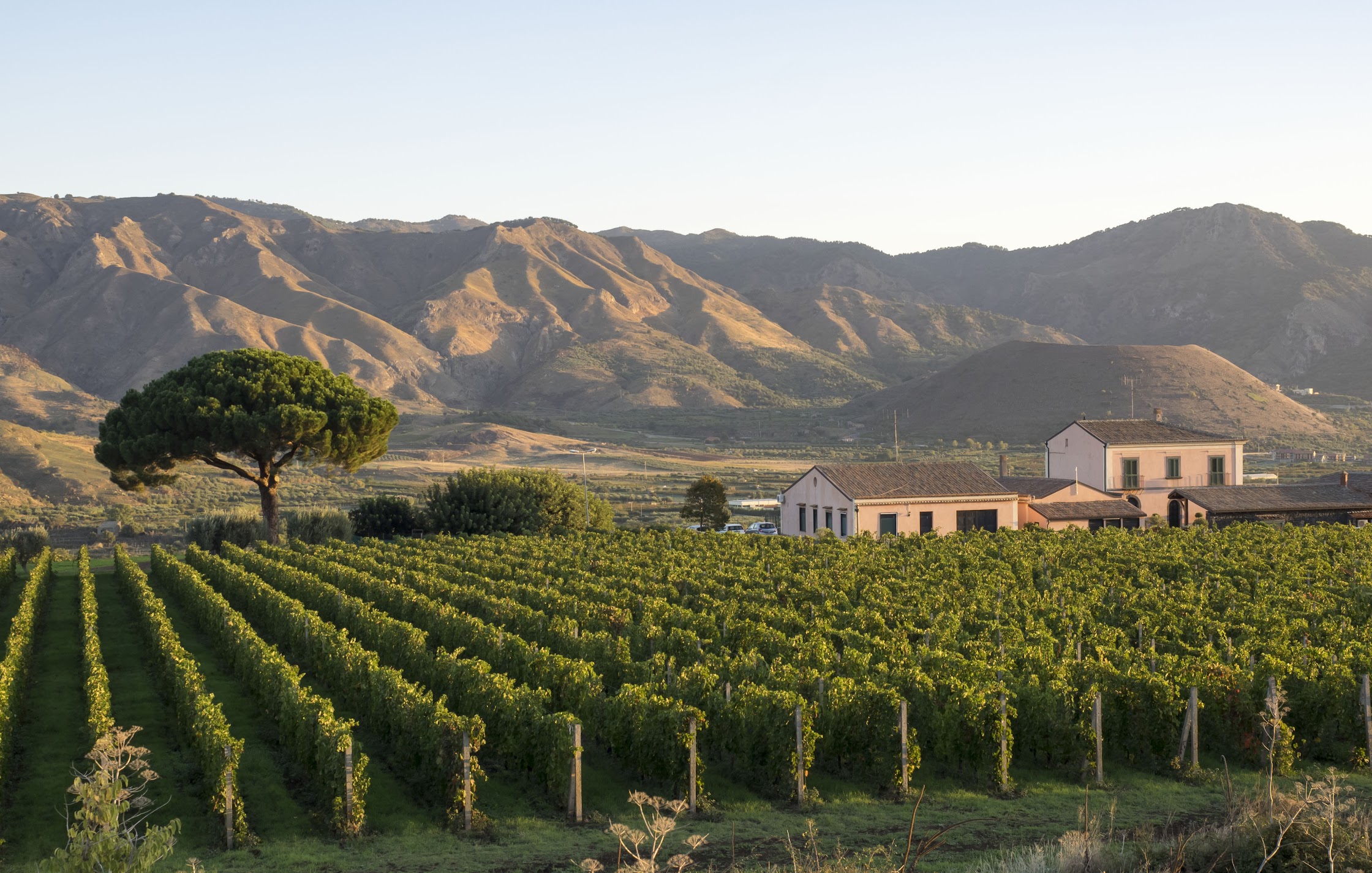The Residence

Everything starts from the memories of the country house, that safe place which recounts our summer holidays in the vineyard. Nowadays we would like our guests to discover that beauty, soften by a contemporary vision of hospitality.
If on one hand a secret silence tells about the cadence of nature and the vineyard appears to cross the windows which reveal it, on the other hand the inspiration of the Residence brings back to life that domestic authenticity, those acts of memory, that exchange of glances and voices which were knowing nods, becoming now our project of hospitality .
This way, surrounded by the perfumes and colors of the seasons following one another, we will tell you our passion for the good wine and the local tastes, the essential values and the design in balance with the fine handcraft of our land.
The villa
Once belonged to the baron Priolo and later purchased by Francesco Cambria together with the farm, it looks very different from the other buildings in the area.
An ancient narration tells us that a long time ago the sicilian aristocracy used to go on holiday to the North of Italy or to tourist destinations in the Alps, being inspired for new contaminations. The allochthonous architectonic style is shaped on this premise and it is what the baron wanted to bring to our land, an entry from Alto Adige to the heart of the Etna country.
When in the sixties Francesco Cambria bought the Residence he did not feel the need to change it, on the contrary he preserved the villa as it was initially.
Therefore, in a context made of black stone an unusual sloping roof stands out, almost to make the snow gliding while a rust red framework surrounds the external walls of the villa. In the current restoration the spaces have been refreshed without altering the past accuracy. But trying to modernise them in a dynamic and contemporary vision. Here and there we can find some pieces of furniture which adorned the locations in the past years, integrated with those entries whose design evokes warmth and hospitality.

The places of agricolture
The hazelnut warehouse
Once the area of the courtyard and its warehouses were the beating heart of the estate.
Here, in autumn, the hazelnuts were stored, an ancient crop, revaluated today, one of the highest quality of this slope of the Etna: in Giovannina’s wood oven, they cooked a bread rised 24 hours, to serve it fresh out of the oven with the oil produced in our estate; the mangers downstairs instead, where today you can find some of our rooms, were a shelter for sheep and goats, whose milk was used to produce the warm “ricotta”.
A life lived following the rhythm of nature, enriched by the laugh and perfumes in the house. Also in these spaces the main aim was to fuse together the domestic history and present materials, for a modern reassessment, to give contemporaneity and naturalness to the locations.
For the flooring and covering in the bathrooms we designated some artesans, able to change the natural stone into a endless, unique piece, characterised by a refined and minimalist design.
Every room is unique in color and appearance so to be carved in our guests’ hearts.
The Palm grove
Behind every wine from Etna there is the precious proof of a millennial culture and the Palm groves along the territory are a demonstration of it, still today.
Owing an authentic exemple of it in the estate, is not just a honour but it gives our guests the opportunity to see the rural and productive history of the Etna with their own eyes.
The lava stone separated the spaces, the grapes were crushed in the harvest tanks, the must flew along the drains to the vats and then there was the press for the grapes pressing.
It was the nerve centre for the mechanic work: a system of rural engeneering which characterised the wine production on the Etna in the past years.
Today the old Palm grove, in the Residence, is the historical proof of what we were and of how the passion for wine has settled roots in our family.
The big walls of lava stone, are the background of the old chestnut barrels which saved grandad Francesco’s wine and today they decorate an extremely fascinating area which recounts stories about people and beauty, especially in the alcove, where we can discover the vintage Cottanera wine.
